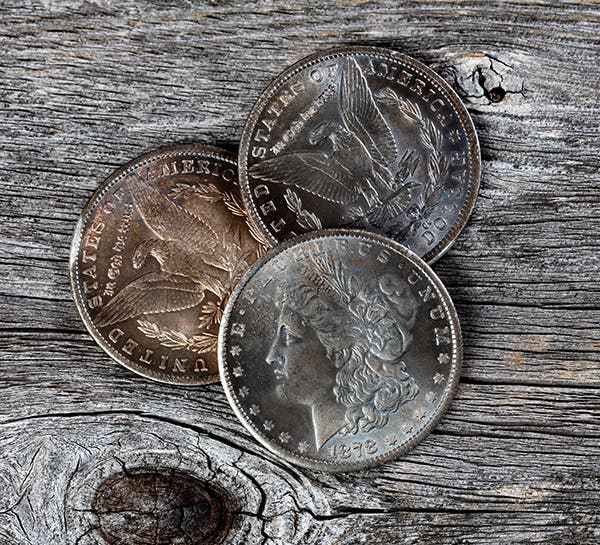Mintage misleading for 1923-S Peace dollar
It hardly seems possible that sleepers can still be found for any type of silver dollar. Along with its popularity have come articles, books and all the information we could…
It hardly seems possible that sleepers can still be found for any type of silver dollar. Along with its popularity have come articles, books and all the information we could seemingly absorb, including which dates are tougher in certain grades. However, the 1923-S Peace dollar is starting to look like something of a sleeper in MS-65 condition.
If any date might be overlooked, this seems like a good candidate. In 1923, the mints were still under a great deal of pressure to produce large numbers of silver dollars. As a result, the 1923-S had a relatively high mintage of 19,020,000. Historically, it has been assumed that most silver dollars from 1921-1923 or even 1924 are readily available and in virtually every grade.
Dollars of this period were not melted, since melting required by the Pittman Act was over. They were produced not to circulate but rather to serve as backing for new Silver Certificates. They sat in vaults until commercial demand arose from places like casinos, at which point they were paid out in bags of $1,000. Of course, being used in a casino was rare, so the silver dollars from this period only saw circulation over a span of time.
With a mintage of more than 19 million, the 1923-S Peace dollar would not have seemed at the time like a date with much promise. Also, very few people were interested in silver dollars back then. Neither low- nor high-mintage coins were likely to be saved in any numbers.
Although the 1923-S went to the vault, examples did occasionally emerge. There was still no numismatic interest, however, so even when many $1,000 bags appeared around 1942, few coins were saved. The same was true around 1950, when more bags appeared near San Francisco. There were also reports of still more bags in the final Treasury releases of 1962-1964.
All those bags appearing over a long period of time, combined with its high mintage, meant the 1923-S did not generate much interest. Like so many other Peace dollars, it seemed like an available date with very little potential. Many Mint State coins simply became circulated.
The Redfield hoard produced only a small number of bags, but it presented the opportunity to find MS-65 coins with eye appeal. This did not happen much, however. While generally Mint State, the coins were apparently flatly struck and usually no better than MS-63.
Today, the 1923-S is priced at just $20 in G-4 and $46 in MS-60. At $5,775 in MS-65, it is a premium date but is not among the top Peace dollar prices in that condition. That said, there are only five more expensive MS-65 dates. The 1924-S is currently at $8,725 in MS-65, putting it nearly $3,000 ahead of the 1923-S.
The Professional Coin Grading Service has seen the 1923-S 153 times in MS-65, twice in MS-66, and once in MS-67. For comparison, the 1924-S (with its considerably lower mintage of 1,728,000) has been seen 91 times in MS-65 and five times in MS-66. Simply put, these totals are close for two dates that are really quite far apart in price.
A large part of the reason for this price difference might well be the historical belief that the 1923-S Peace dollar (thanks in part to its large mintage) is readily available. Of course, that same belief, which resulted in few being saved, is how we got to the current situation. Sooner or later, someone will discover that the 1923-S is not available and that it may be a great value at its prices today.
This article was originally printed in Numismatic News. >> Subscribe today.
More Collecting Resources
• Subscribe to our monthly Coins magazine - a great resource for any collector!
• The Standard Catalog of World Coins, 1901-2000 is your guide to images, prices and information on coinage of the 1900s.








